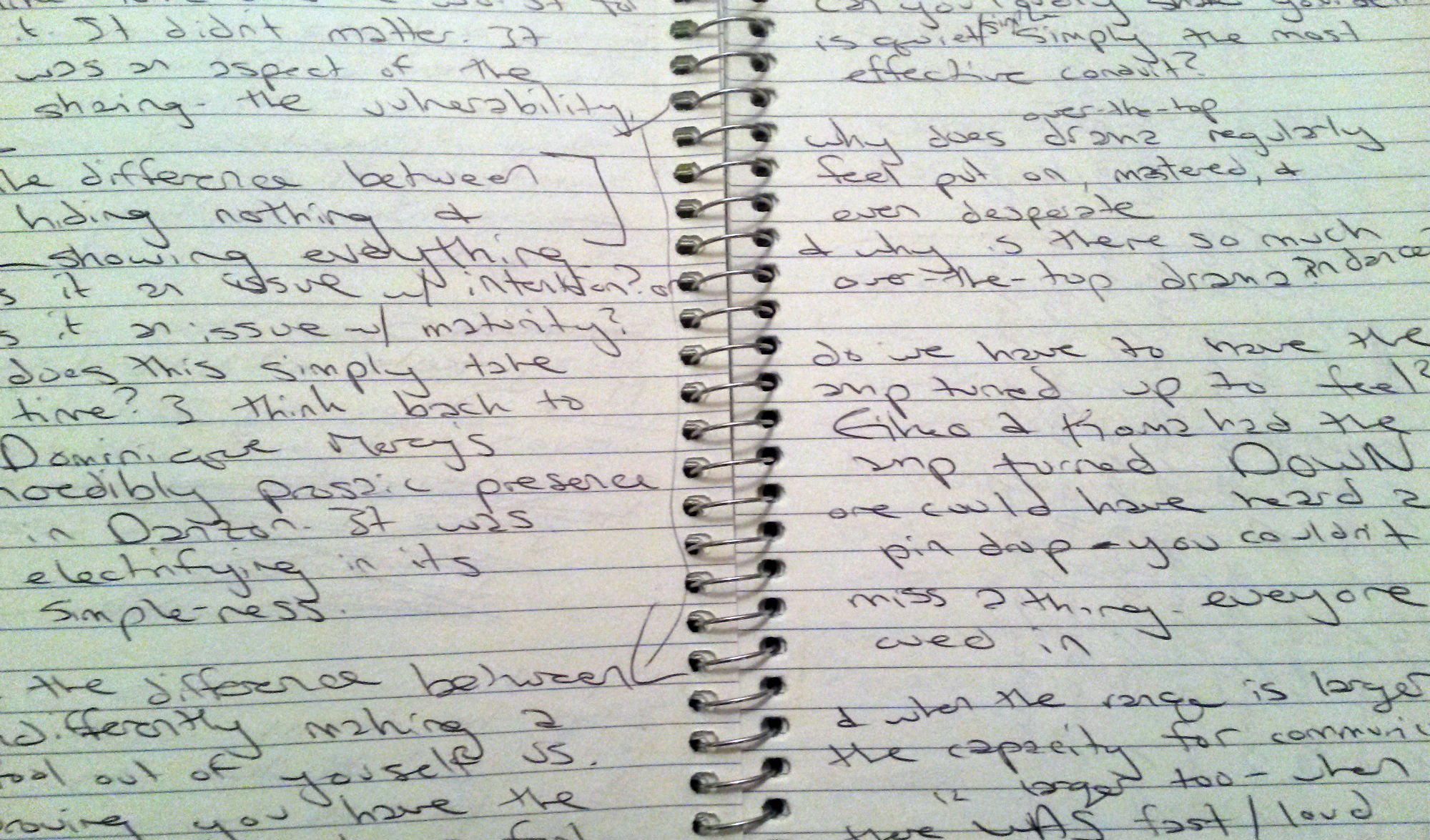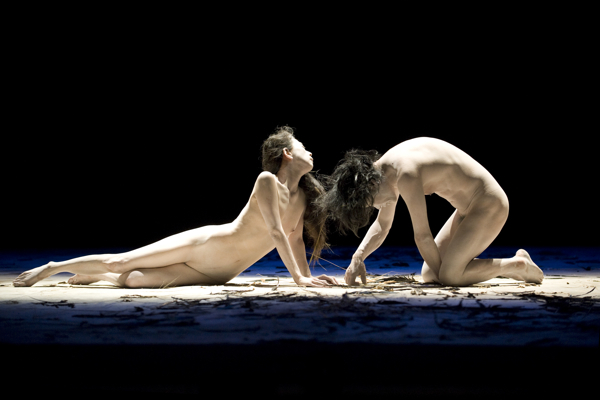Why did it affect me so deeply?
Editor’s note: This month on Stance on Dance, several dance artists have been asked to share a pivotal dance experience that changed their trajectory or the way they think about dance.
BY EMMALY WIEDERHOLT
Eiko and Koma’s Night Tide
Yerba Buena Center for the Arts, San Francisco 2012
It was a cold wet Friday night in April of 2012. Though I’d never heard of the highly-regarded Butoh couple Eiko and Koma, somebody told me I just had to see their show. So I dragged myself back downtown.
The show that night was not particularly well-attended, perhaps due to the weather, which suited me as I was feeling curmudgeonly; I sat way off to the back by myself.
The performance was part of a retrospective of Eiko and Koma’s lifetime of work. One piece in particular – Night Tide (1984) – portrays two mountains who roll together to make love in the middle of the night before returning to their ranges by dawn. Ostensibly, all Eiko and Koma did was slowly roll toward each other from opposite sides of the stage, he put his hand on her chest, and they rolled back. It was incredibly slow, and perhaps tedious to some, as I vaguely recall a few people walking out.
But up there in the back of the theater, I was transfixed; I was sitting on the edge of my seat; my breath was held; tears welled and trickled down my cheeks in succession. I was, in a word, moved.
I left the theater before the applause died out, so great was my need to start writing about what I’d just seen – why did it affect me so deeply? On the bus ride home, words tumbled from my pen. It was not the kind of writing where I know it will be published and so I pay detailed attention to word choice and syntax. No, it was the kind of writing that desperately seeks to make permanent some aspect of the elusive by committing it to paper.
I preserved those notes. Here is the gist:
And when I did publish an article on the piece, the words came straight from the heart:
“It’s the difference between showing and sharing, the difference between displaying everything and hiding nothing, the difference between proving you have the guts to make a fool out of yourself and indifferently playing the fool. I’m not sure if it’s a matter of intention or maturity, or perhaps an intention that comes with maturity, but there’s something about performers who have spent a lifetime being watched. They have a certain simplicity and immediacy in their stage presence, a sense of having nothing to prove and all the time in the world to prove it in.”
In the weeks and months that followed, I shared my impressions from Night Tide with practically anyone who would listen. In fact, sharing those impressions with my photographer friend Gregory Bartning was what served as the catalyst for the Dancing Over 50 Project. I wanted to keep unearthing how experience changed intention, how longevity informed performance, and how movement could be distilled through age. And Gregory was game to photograph it.
I could never have known that rainy Friday night in 2012 how Night Tide would affect me, and in thinking of the ways an experience can alter a person’s trajectory, I’ve asked several dance artists to share with Stance on Dance some of their life-changing dance moments, to be published over the coming month. It might be as simple as a slow roll across the floor, but the implications ripple on afterward in larger and larger circles.
Eiko and Koma in Night Tide; photo by Anna Lee Campbell


